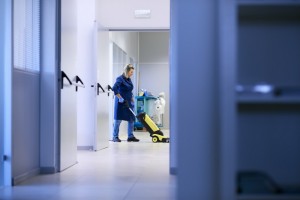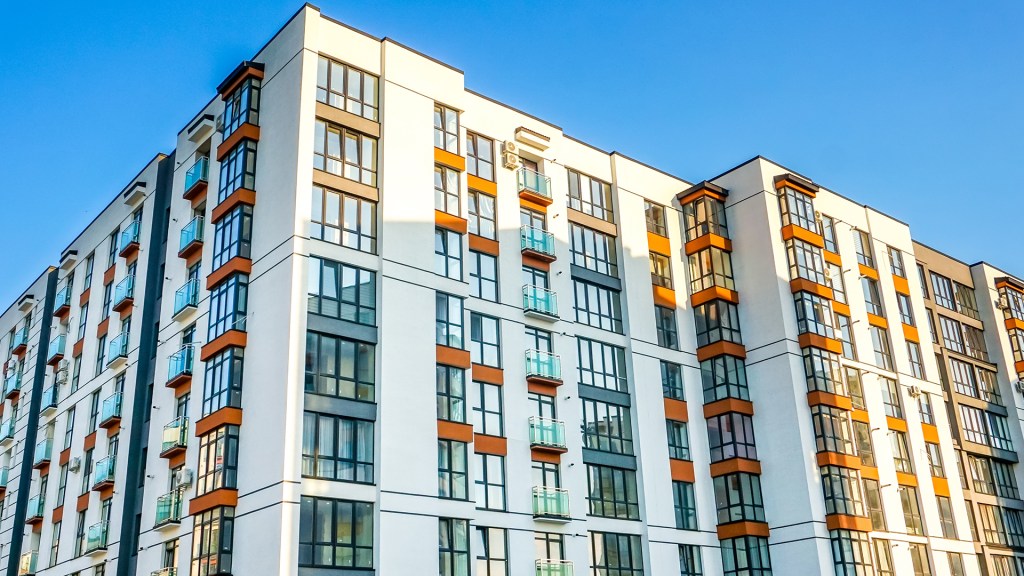By Erica Rascón on July 29, 2013 in News
 What began as a small push from eco-conscious businesses has become a cost effective movement that is sweeping Europe and North America. By switching to daytime cleaning services, businesses are experiencing multitudinous benefits.
What began as a small push from eco-conscious businesses has become a cost effective movement that is sweeping Europe and North America. By switching to daytime cleaning services, businesses are experiencing multitudinous benefits.
Still, most businesses are not thrilled about the idea: will the activity cause a disruption in the workplace? Will employees be distracted by the noise? While all valid concerns, a better understanding of how daytime cleaning works can eliminate worries.
How it works
For starters, no one will ask your clients to lift their feet so that the vacuum can pass under. You should not choke on floating dust during an intense sales call, either. The cleaning staff simply starts emptying trash cans, cleaning restrooms and other relatively quiet tasks during the last few hours of business. Once most employees are gone, the heavy duty work begins. Starting maintenance a few hours earlier permits the cleaning crew to leave the business earlier.
The monetary savings come when cleaning tasks overlap with regular business hours. Tony Guzzeta of ABM Janitorial Services explains, “One of the biggest uses in the building is energy. If you could conceivably do some cleaning while people are at their jobs, you cut the end result time down and again, it saves money.” The lights and air conditioning, for example, are already running. There is no need to consume more energy for several hours after the business has closed so that the janitors can work.
“There are about three fewer hours at night that the lights would be on, which would save you between nine and ten cents per square foot” says Rick Needham, General Manager of 10 & 120 S. Riverside Plaza. For larger businesses, the savings are more impressive. The California EPA building saved nearly $100,000 per year by switching to daytime cleaning. Denver EPA saved $250,000 per year, close to $.80 per square foot every year.
Businesses may also save funds by reducing the need for daytime and evening maintenance technicians. Restocking the employee lounge, loading vending machines and other tasks which took place during the day can be performed by the same janitors that handle evening cleaning.
Businesses may cut back on the number of janitors needed for another reason: when employees see and know the person who cleans up after them, they tend to partake in a bit of personal housekeeping. Employees keep their spaces tidier. In the end, less mess overall leads to fewer janitors needed to keep the building up to par.
In addition to conserving energy and saving money, tenants experience an increased comfort level. Daytime cleaning results in a higher level of accountability for janitors; in turn, tenants and their employees feel more comfortable with the quality of services provided. Daytime inconveniences, such as an empty soap dispenser or an out-of-order toilet, can be addressed sooner than later.
Another unexpected benefit to daytime cleaning: better and more affordable security. Evening cleaning may result in heightened security risks when employees leave sensitive paperwork or personal items on their desks for the evening. Daytime cleaning minimizes both accidental and voluntary exposure to such materials. Since the maintenance crew enters during the daytime hours, there are also fewer false security alarm dispatches, which lower or eliminate related fees that the business may incur. Buildings that provide security officers during operating hours may also minimize costs by having the janitors (and thus the security officers) spend fewer hours on the property.
Needham continues, “[Daytime cleaning] is something that provides value, saves tenants money, improves their employee morale, and has shown over the long run to reduces turnover for them, and reduces the carbon footprint of the buildings that we manage. What’s not to like? It’s a great idea.”
Ensuring a smoother transition
Most problems that arise as a result of daytime cleaning are the result of poor communication between the janitors, tenants and their employees.
Before switching from evening to daytime cleaning, have an open conversation with the janitorial staff. Some may work multiple jobs. In other cases, workers prefer an evening shift as it helps balance daytime childcare responsibilities with a family member that works during the day. In such cases, changing work hours may mean a temporary increase in turnover. More commonly, however, the switch to daytime cleaning results in fewer turnovers as daytime positions are more easily filled than night shifts.
Secondly, management must conduct basic training with their employees to ensure that cleaning may be completed with minimal hindrance. When cleaning takes place during office hours, employees have more control over what is (and isn’t) cleaned in their cubicles or offices. Perhaps in an effort to avoid disruption, employees may “wave off” cleaners, requesting that the cleaning staff skip that space. When this happens frequently, it could result in a buildup of dust, mold spores, and germs that can spread through the HVAC system. Employees must know that regular cleaning is not an option.
Lastly, the janitorial staff may need to consider different cleaning products. High-VOC products irritate the eyes, nose, throat, and skin. Changing to products with fewer VOCs proves beneficial for the health of janitors and employees. By employing more sustainable cleaning solutions, cleaning staff and employees can enjoy improved air quality and fewer physical repercussions.
Accepting change is not always easy. Travelers encounter stumbling blocks on any newly blazed trail. As time progresses and daytime cleaning becomes more commonplace in businesses worldwide, the shift to greener cleaning becomes easier to handle for tenants, employees, and janitors alike.


